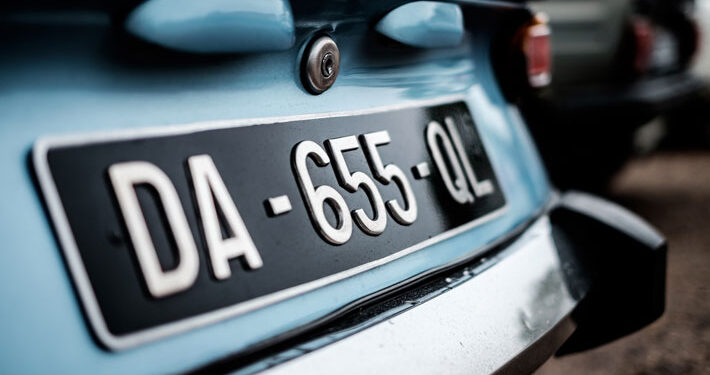3D Vs 4D Plates: Find the Right Option for Your Car

You may have just received that much awaited personalised number from the DVLA, or perhaps those 2D plates just don’t look like they belong on your brand-new car. Whatever your reasons might be for considering a new 3D or 4D registration number plate, you can’t really go wrong with either.
However, 4D plates do have an edge over their 3D counterparts, which is why they cost more as well. That being said, people’s choices do differ, so it’s best to take the decision based on your own preferences. In order to make that right decision though, it must be an informed choice, which is precisely why we are going to go through what 3D and 4D number plates are exactly, as well as their differences.
3D Number Plates
The main difference between 2D and 3D number plates is in how the registration number is put on top of the plate. Polyurethane gel resin is used on top of a sheet plate to create and then raise each character in a registration number above the level of the base plate. These domed gel characters add an extra dimension to your number plates as compared to a regular 2D plate, where both the registration number and the plate is at the same level. Although 4D plates are a more premium option, do keep in mind that 3D number plates are also considered to be a premium choice.
4D Number Plates
Number 1 Plates is a premier name in manufacturing DVLA compliant registration plates (2D, 3D, 3D Plus, 4D, pressed metal and all other types of customised solutions), and they explain exactly what the differences are between 3D and 4D number plates. In their own words, 4D number plates are quite similar to 3D number plates in many ways, but there is a key difference in how they are each made, which is what makes the former an even more premium choice.
Instead of how gel resin is used on sheet plates to create that 3D effect, 4D plates are made by cutting acrylic into perfect shapes with an industrial laser. In other words, each character in your 4D registration number plate will be equally perfect with zero room for variables or errors. Due to the laser cut precision and method, 4D number plates don’t just look better, they also allow a lot more in terms of customisation, that gel resin 3D plates can’t.
Is It legal to Use 3D or 4D Plates in the UK?
As long as we are discussing the United Kingdom, both 3D and 4D registration number plates are legal to use and customise, provided that the user follows all guidelines made clear by the DVLA.
You can check out the official government website for more detailed information, but we have listed the most important of those guidelines below for your convenience:
• The detailing must not interfere with the registration number’s legibility/clarity in any way
• The 3D or 4D plates used must be reflective in nature
• The registration number must be in black, which applies to both the front and the rear plate
• A white background for the front plate and yellow background for the rear plate are mandatory
• Patterns/designs/detailing must not be present in between the black characters and the white/yellow background
Ensuring legal compliance in accordance with everything stated above should always be a priority, but for the most part, neither 3D, nor 4D number plates are illegal in United Kingdom.
Now that you have been properly introduced with what 3D and 4D plates are, as well as the primary DVLA guidelines which all manufacturers and car owners must follow, making the right decision in favour of either type is completely a matter of personal choice and budget.










